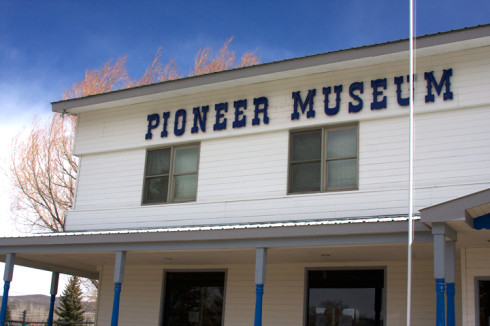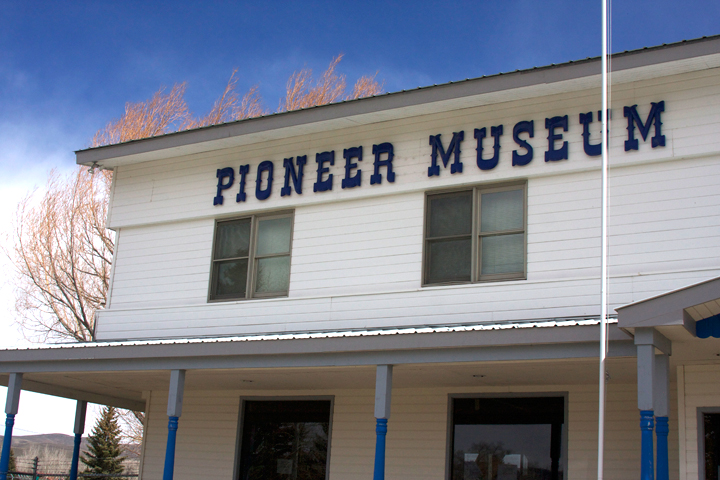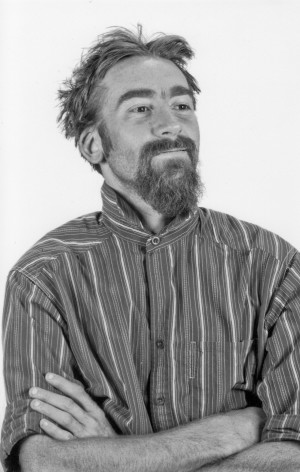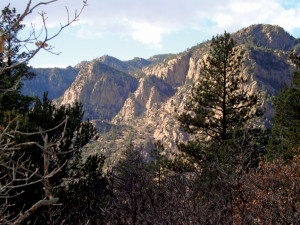By Polly Oberosler
The Gunnison County Pioneer and Historical Society was formed in 1905. By 1906 they had decided that they would work toward the establishment of a local museum to conserve the rich heritage they were a part of. Although the Pioneer Society was active, the idea of a museum did not officially come to be until 1963, when the Adams and Wilson families donated five acres of land to start the project. The museum itself opened its doors in the summer of 1964.

Today the Pioneer Museum is staffed by 60 volunteers, many of them longtime locals, and the museum has accepted artifact donations from nearly every Gunnison County pioneering family and a few folks outside of the Gunnison valley. All but the grounds maintenance person are volunteers, right down to the curator, multi-generational native CJ Miller, whose family has local lineage back to the early 1880s. The buildings that house the thousands of antique treasures are donated by area businesses and private families. It truly is the pride of the area and represents the toils and the good times of Gunnison County’s ancestral past.
One intriguing display is of western hats worn formerly by area ranchers that hang in silence, expressing the fortitude and sweat that went into carving ranches out of the Gunnison Valley. They overlook the floor where well- worn saddles rest on stands and are testament to the perseverance of the cowboys of the early cattle industry. Haying machinery of every vintage is found on the grounds, telling of the history of putting up hay for the family cattle operations. My Aunt told me of “tying” hay bales when she was a teenager in the 1920s. The baler would sure enough compact the hay, but they had not quite come up with an automatic tie in her day; that’s what kids were for.
The ranch collection includes buggies, tractors, wagons and barns. There is even a wheat thresher and potato planter from a time when the valley did not want for much because they produced it for themselves. The Native American’s intimate association with the area is represented by a huge private arrowhead collection left from a time when they hunted buffalo in the Gunnison Valley, and later when the Utes were herded onto the Los Pinos reservation known as the Old Agency south of Gunnison.
I personally have a few connections to items on display at the Pioneer that include a cabin my grandfather built in the 1920s and a U.S. Cavalry sword my uncle found in the mountains near Almont. My Aunt Ruby Cranor taught in the Paragon School that was moved to the museum in the 1970s. It is one of the most beautiful buildings you are ever likely to see. It was designed in 1905 by a ship designer-turned-local rancher, John B. Outcalt. It includes a corner turret that was patterned after a tugboat wheel house, and a beautiful bell tower that was meant to resemble a lighthouse on the Atlantic coast.
The museum has something for everyone, including over 70 vintage automobiles housed in one long, large building, named for the largest single donor, Andy Mallet of Delta, Colorado. The collection is certainly one of the largest anywhere. Also onsite is a wonderful collection of telephone memorabilia from the Quest Telecom Pioneers of Grand Junction that includes turn of the century switchboards, one of a kind collectable and crank-arm phones. There are few collections that can match it. There is a narrow gauge railroad engine, cars, water tower and track on site, a dairy barn constructed with pegs instead of nails, a household appliance display and one of the finest cloth collections anywhere. Dolls, stamps, mining machinery and military attractions intrigue my imagination as I envision their place in the past.

In all there are 18 secured buildings housing thousands of historical treasures from as far back as the 1870s. The folks of the Pioneer Society are willing to put the museum against about any collection in the state, and are truly proud of what has evolved since its humble beginnings.
The Pioneer Society also owns the Aberdeen Quarry south of Gunnison, where granite was mined for the Colorado State Capital Building, headstones and work surfaces. Tours of the quarry are available periodically throughout the summer.
The entry fee to the museum for both adults and kids is nominal, largely because of the generous donations that are left by patrons or given by pioneer families. The museum runs almost exclusively on those donations, which the Pioneer Society would like to remind folks are tax deductible. The facility is open from Memorial Day to the end of September, seven days a week. Their hours of operation are 9 a.m.-5 p.m. daily. You can get more info by calling them at 970-641-4530, or visit them on the web at: www.gunnisonpioneermuseum.com.
A native of the Gunnison Valley, Polly writes of her notions and experiences while riding, ranching and packing for the U.S. Forest Service.



